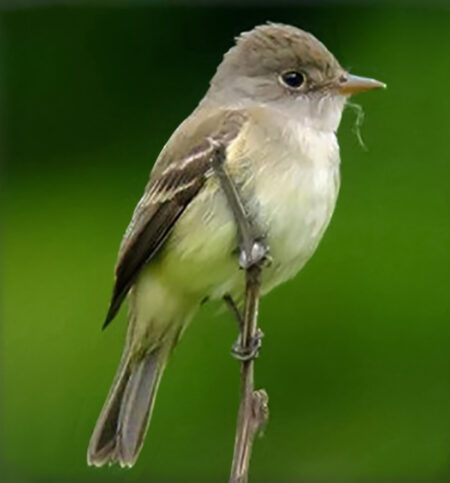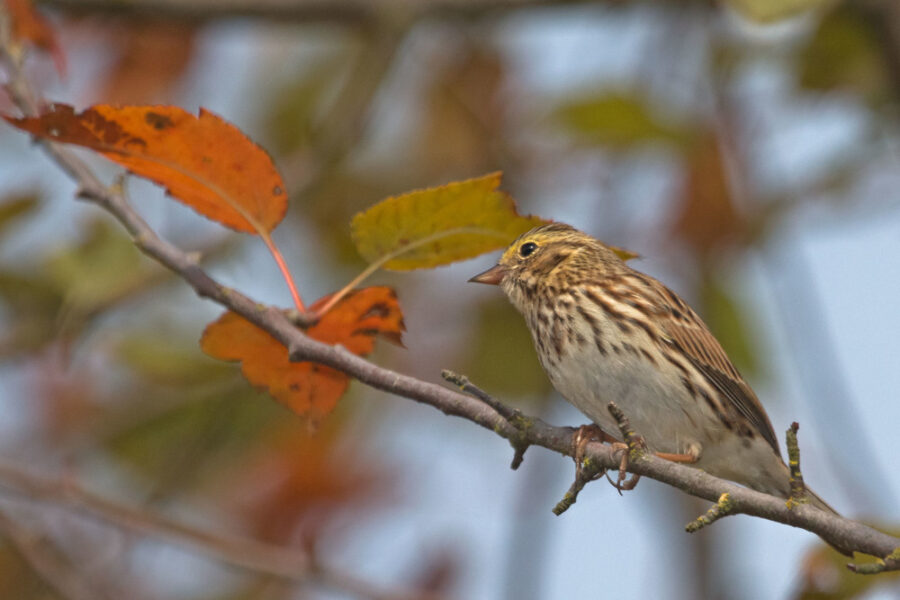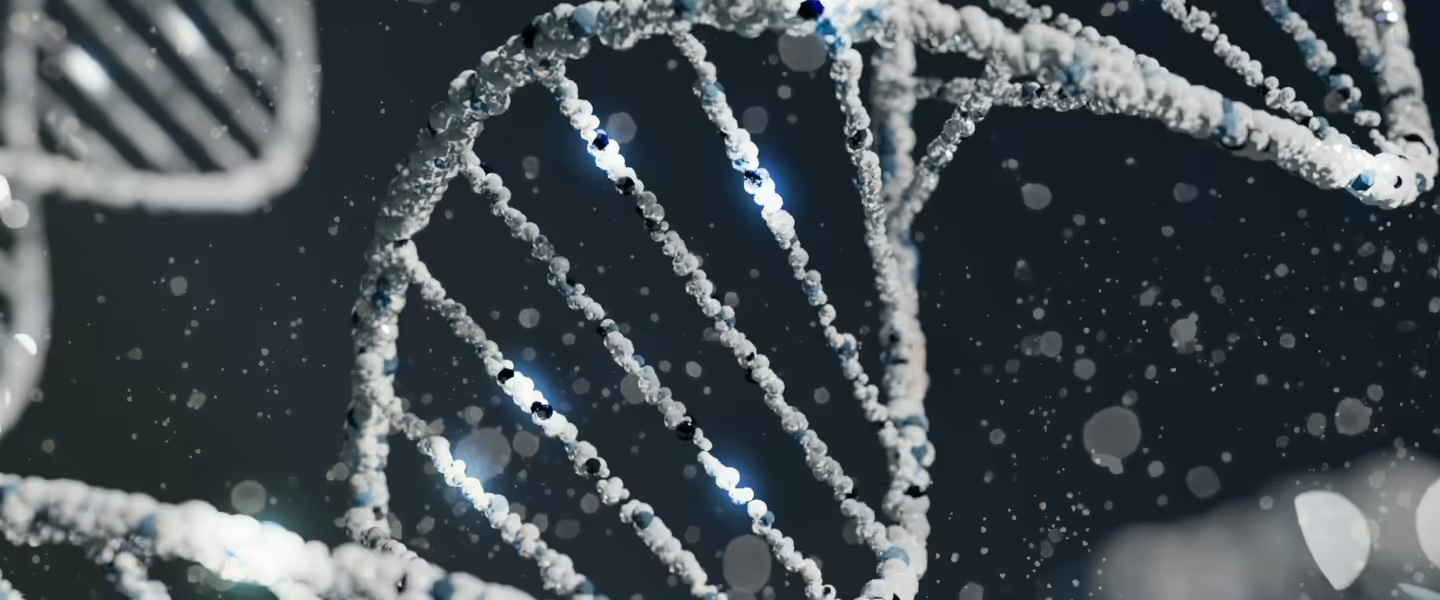Environmental Change, Written in the DNA of Birds
Two studies of California bird populations show how shifting environments can rewrite animals’ genomes — for better or worse.
|
Listen To This Story
|
As the environment shifts — due to climate change, habitat destruction, or other threats — we can often observe some of the ways that wildlife responds. Populations may decline. Individual animals may move. Some species may alter their behavior.
But at the same time, scientists warn, wild plants or animals may experience harder-to-detect changes — for example, alterations to their genomes, the very DNA that defines them.
It requires a sophisticated genetics laboratory to see these otherwise invisible changes at first, but they may have important implications for populations’ futures.
How exactly can threats such as climate change and habitat loss have hidden effects on a species’ genetic code? Two studies on California birds, both published in the past year, illustrate the potential — both beneficial and problematic.
A New Adaptation
The endangered southwestern willow flycatcher (Empidonax traillii extimus), ranging from California east to New Mexico and Colorado, depends on rapidly disappearing riparian habitats. As those riverbanks dry up, scientists began to wonder how the birds have adapted. They found the answers by looking to the past.

Photo credit: USFWS / NPS
In summer 2023 a group of scientists published a study comparing the genomes of flycatcher specimens collected in San Diego around the turn of the 20th century — taxidermied birds preserved in museums — with those of contemporary birds, using blood samples collected from individuals captured across willow flycatchers’ breeding range today.
The study was only possible due to rapid advances in technology.
“Until recently, it was very difficult to sequence historical specimens across their entire genome,” says Sheela Turbek, a postdoctoral fellow at Colorado State University who led the project. “DNA tends to degrade over time, and older specimens can have really low DNA concentrations.”
The results surprised Turbek and her colleagues: San Diego flycatchers’ genetic diversity has increased over time.
Most notably, this increased diversity included areas of the genome linked with climate adaptation.
According to the study, it appears the San Diego birds have bred with flycatchers originally from populations in other areas of the West, which may have moved in response to local habitat losses. And as natural selection has acted on this increased diversity, the San Diego birds’ genomes have shifted away from those of neighboring populations, potentially making the local birds better suited for life in a wetter, more humid environment being shaped by climate change.
It’s the first time, as far as Turbek knows, that genetic adaptation to climate change has been documented in a wild bird population.
“These genetic changes are imperceptible to the human eye, and we don’t know exactly what [these genes] are controlling,” says Turbek, “but we were able to identify several genes that are likely involved in heat tolerance and the birds’ ability to effectively dissipate heat in humid environments.”
Turbek cautions that this doesn’t necessarily mean that the future of the San Diego flycatchers is rosy. “Given the unprecedented rate at which environmental conditions are changing, I think this rate of adaptation is likely insufficient, and current records show that the San Diego population is still declining,” she says. But, she admits, it’s “encouraging.”
Losing What Matters
Scientists call this exchange of genes between populations “gene flow.” Gene flow has also helped boost the genetic diversity of another threatened California bird population — but at a cost.
Phred Benham, now a postdoctoral researcher at UC Berkeley, spent his time as a Ph.D. student investigating how two savannah sparrow subspecies, Passerculus sandwichensis alaudinus and Passerculus sandwichensis beldingi, have colonized coastal saltmarshes and adapted to life in a saline environment. “While spending a lot of time driving around California, I became interested in the human impact on these marshes,” he says.

Photo credit: Photo: Peter Pearsall / FWS / The Revelator
He led a study published in January that documented how the genomes of California’s coastal savannah sparrows have changed over the past century — a period during which up to 90 percent of the birds’ habitat has been destroyed by human activity. Like Turbek, he sequenced the genomes of historical bird specimens preserved in natural history museums and compared them to those of birds alive today.
Benham’s study encompassed six tidal marsh populations, and he expected that those that had lost the most habitat would also have lost the most genetic diversity. Instead, he and his colleagues found, in the San Francisco Bay area — where birds had experienced the greatest levels of habitat loss — genetic diversity remained relatively high. This, Benham believes, is probably due to immigration from inland populations of savannah sparrows.
There’s just one problem: Those inland birds don’t share the genetic adaptations that make the coastal birds so perfectly suited for life in salt marshes.
Coastal sparrows have larger kidneys, the ability to excrete salt in their urine, and even the ability to distinguish between more- and less-salty water when they need a drink. Now genes from inland interlopers may be diluting the traits that make saltmarsh birds unique.
There’s no way to really stop birds from other parts of the state from dispersing into these coastal areas, so Benham would rather focus on preserving and restoring salt marsh habitat.
“The population can tolerate immigrants if the selection [for salt-tolerant traits] is stronger than the rate of gene flow from those immigrants,” he says. In other words, if there’s enough intact salt marsh habitat for salt-tolerant traits to really have a big impact on the birds’ success, genes from inland immigrants will be naturally weeded out.
Genetics Reveal Conservation Priorities
Taken together, these two studies illustrate the hidden ways in which environmental change can rewrite animals’ genetic code, and how the same unseen force — in this case, gene flow — can be helpful or harmful, depending on the context.
According to Benham, wildlife managers’ views on gene flow have swung back and forth over time. In some cases, conservationists have pushed to eliminate “hybrid” populations, where subspecies have interbred, to preserve genetic purity. On the opposite side of the spectrum, wildlife officials famously brought cougars to Florida from other parts of North America to revive the state’s inbred population.
“There’s a lot of evidence showing that when you have a very tiny, inbred population, gene flow can rescue it from the negative effects of inbreeding,” Benham says.
But if intermingling populations are adapted for very different environments, the cure may be as bad as the disease.
Both studies also highlight the value of natural history collections, an invaluable but underfunded and underappreciated resource for understanding environmental change. Duke University, for example, recently announced that it will close its herbarium, which houses 825,000 plant specimens dating back a century.
“I don’t think we can fully grasp at this point the value of all those specimens in museum collections,” says Turbek. “We’re going to continue uncovering that as the technology develops to fully mine them for further information.”
It’s too soon to say for sure how these newly revealed genetic-level changes might ultimately affect the health of San Diego’s willow flycatchers or San Francisco’s savannah sparrows. Researchers still lack the data necessary to connect the genetics to the physical traits of individual birds, or to say how those traits might impact their survival.
But as climate change continues to accelerate, understanding how it may rewrite the genetic code of the species it impacts will only become more crucial.
“Our understanding of [genetic] adaptation to changing climate conditions is surprisingly limited,” says Turbek. We’ll need every resource we have — from historical specimens in the back rooms of natural history museums to cutting-edge gene sequencing techniques — if we hope to untangle these complex relationships in the future. The answers we find may provide the clues we need to keep species from suffering in a world that’s changing around them.
This story by Rebecca Heisman was originally published by The Revelator and is part of Covering Climate Now, a global journalism collaboration strengthening coverage of the climate story.


